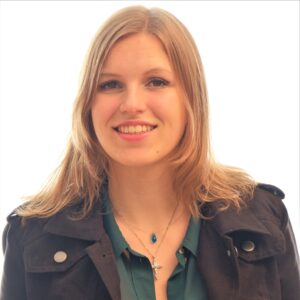Research
Research
Efficient valorization of CO2 through e.g. CO2 hydrogenation reactions is needed to create a circular and sustainable CO2 economy.1 A possible route towards improving catalysis for CO2 hydrogenation is by the use of light as external stimulus, i.e. photo-assisted catalysis.2–4 However, thorough understanding of the interplay between the light, the excited electrons and the reaction mechanism is still lacking. Under supervision of prof. dr. Weckhuysen and dr. Monai I aim to shed light on the mechanisms behind photo assisted catalytic reactions using operando spectroscopy. In addition, the possibility to create resonant catalysis (which could push catalytic performance beyond the Sabatier limit5) using intermittent light will be explored.
- Vogt, C. et al. The renaissance of the Sabatier reaction and its applications on Earth and in space. Nat. Catal. 2, 188–197 (2019).
- Xie, B. et al. Synergistic ultraviolet and visible light photo-activation enables intensified low-temperature methanol synthesis over copper/zinc oxide/alumina. Nat. Commun. 11, 1651 (2020).
- Kim, C. et al. Energy-efficient CO2 hydrogenation with fast response using photoexcitation of CO2 adsorbed on metal catalysts. Nat. Commun. 9, 3027 (2018).
- Tan, T. H. et al. Unlocking the potential of the formate pathway in the photo-assisted Sabatier reaction. Nat. Catal. 3, 1034–1043 (2020).
- Shetty, M. et al. The Catalytic Mechanics of Dynamic Surfaces: Stimulating Methods for Promoting Catalytic Resonance. ACS Catal. 10, 12666–12695 (2020).
C.V
C.V
2021 – Present
PhD student in the group of Prof. Dr. Ir. B.M. Weckhuysen, Inorganic Chemistry and Catalysis, Utrecht University.
Topic: Overcoming the static Sabatier limit by using external stimuli to create catalytic resonance.
2019 – 2021
Master’s degree in Nanomaterials Science, Utrecht University
Master thesis at the Condensed Matter and Interfaces group, “Insight into the Formation Mechanism of CdSe Nanoplatelets via in situ Absorption and SAXS Measurements Under Realistic Synthesis Conditions”, supervised by J. C. van der Bok, MSc. and prof. dr. A. Meijerink.
Internship at the Optical Materials and Engineering Laboratory, ETH Zurich, Zurich, Switzerland,
“Nanostructuring of Hexagonal Boron Nitride: Capabilities & Limitations of Patterning with Thermal Scanning-Probe Lithography”, supervised by N. Lassaline, MSc. and prof. dr. D. J. Norris.
2015 – 2019
Bachelor’s degree in Chemistry, Utrecht University
Bachelor thesis at the Condensed Matter and Interfaces group, “From Nanoplatelet to Nanoring: Reproducibility and Optical Properties of Colloidal semiconductor CdSe Nanorings”, under supervision of B. B. V. Salzmann, MSc. and prof. dr. D. A. M. Vanmaekelbergh.
Publications
Other publications
See earlier publications on Scopus.

